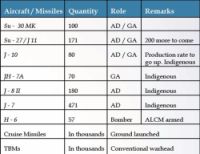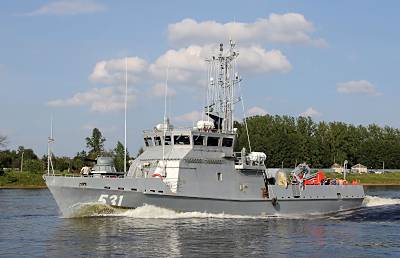As per one report China had deployed 5,00,000 soldiers on the Tibetan Plateau. Half of them were based on Sino-Indian border. Four additional Chinese Armies, each 60,000 strong were based in neighbouring Sinkiang and Chengdu military district able to support operations against India by flanking attacks or providing follow on re-enforcements.
PLAAF will have modern aircraft for both air defence and long range strike and Army support. It will have around 9 AWACS / AEW&C, Air Refuellers, surveillance and Electronic warfare aircraft in support. Space imagery will present good intelligence on our target systems. The fighters will have modern air to air missiles including beyond visual range active missiles
In 90s another report estimated PLA fielding 12–14 divisions in TAR, which could go up to 20 divisions. Now the likely maximum could be around 30 divisions. If true this is really a large force. It would be a daunting challenge for the Indian Army.
PLAAF is replacing its obsolete combat aircraft fleet and weaponry with current 4th generation fighters and modern weaponry. In Tibet area its airfields lie within 300 to 1,000 km from IAF bases. Most of the airfields are at high elevation between 3,500 to 4,300 meters above sea level. The table below gives details of these airfields.
There are a total of 14 airfields of concern. However increasing air refuelling capability in future will increase their numbers. PLAAF can deploy around 16 squadrons in these airfields. They would deploy the best units here, unless our diplomacy can ensure simultaneous threats to China at other fronts.
Out of 1,600 plus combat aircraft, around 400 aircraft are 4th generation. Its old bombers carrying long range cruise missile will be still effective. Ground launched cruise missiles (GLCM) and TBMs will add to the strike power. The table on the next page gives details.
 |
Click to enlarge |
Thus it is evident that PLAAF will have modern aircraft for both air defence and long range strike and Army support. It will have around 9 AWACS / AEW&C, Air Refuellers, surveillance and Electronic warfare aircraft in support. Space imagery will present good intelligence on our target systems. The fighters will have modern air to air missiles including beyond visual range active missiles. Strike aircraft will have PGMs. H‑6 will carry air launched cruise missile of 1,400 km plus range. The high altitude of TAR will reduce bomb load to around one third that of sea level. But today’s PGMs have reduced the required bomb load for target destruction significantly. Air refuelling and high performance of Su-27, Su-30, and J‑10 will offset altitude disadvantage to quite an extent. TBMs and GLCMs will not be affected much.
The targets on Chinese side, destruction of which could cause pain, are located far away from the border. The heartland of China, East and South-east China starts at an average distance of 1,000–1,500 km from our airfields. The heartland is around 2,500–3,000 km. They are far too distant for air power to destroy as it exists today in the IAF
Chinese airfields and other logistics related areas will have plethora of manual and automatic anti-aircraft artillery. In addition there will be MANPADs, close and medium range SAMs. Radar cover will be extensive at medium and high altitude.
Implication for India
Timely intelligence input on Chinese build-up and its war intention will be crucial for Indian timely response. First India will need to ensure that Pakistan and Bangladesh fronts remain dormant. Use of diplomatic means, deterrence means etc. will be required. This alone will permit India to maximise its Army and Air Force for Chinese fronts. Army’s mobilisation would be critical if the need to defend at the border itself is a must. It is instructive to see an outsider’s view of our mobilisation. Edward Luce, with respect to our mobilisation consequent to attack on our parliament stated, “ … watching India’s rusting military hardware chug past us reminded me of what I had read about the preparations for the First World War: mobilisation had followed the dictates of European railway timetables. Now India’s mobilisation, which was later dubbed ‘coercive diplomacy’ was occurring at the stately pace of the Indian Railways.”
 |
Click to enlarge |
China’s aim would be to put India in a secondary status. A military defeat along with economic and industrial disruption would be the obvious aim. Large scale territorial occupation most unlikely. To make military defeat convincing cutting off north-east India at Chumbi Valley-Silliguri corridor would be ideal. North-east India could be restored to India after imposing humiliating terms in Ladakh region. In worst case China may not revert Arunachal
IAF down to 30 combat Squadrons is stretched on two fronts. Catering for even bare minimum air defence on western borders, IAF will be barely able to match PLAAF. An enhanced IAF on the other hand with inherent faster mobilisation and deployment without the acclimatisation need, offers the best hope of concentrating offensive power at places of our choosing. In future the gap between IAF and PLAAF will increase further unless urgent steps are initiated at once. IAFs SAMs are way too old. New ones are nowhere on the horizon in required numbers. Though we do have limited air refuelling capability and few AWACS, it is woefully inadequate.
Our airbases and Army formations along with important areas will require sound air defence along the 4,000 km plus border. Chinese could also ingress from the Myanmar, Nepal and Bhutan border. The Himalayan mountains severely limit the detection by ground based radars. This makes available warning time totally inadequate for reaction by aircraft based on ground alert. Airborne air defence 24 hours a day would require phenomenal resources. Nobody can afford it. This makes AWACS essential for survival.
During Gulf war-91, MNF employed 3 AWACS simultaneously on a 1,000 km front. To keep 3 AWACS always airborne they needed to do 3 trips each of 9–10 hours. To fly 9 sorties each day MNF deployed 14 AWACS and 3 Nimrods. Thus to cater for our 4,000 km front we would need 56 AWACS. This would also cover the border at Myanmar, Bhutan and Nepal. On the face of it this may seem too costly, but proper analysis would show it not to be so. Because with AWACS giving us a warning period of about minimum 30 minutes we will be able to scramble fighters from ground alert. This would also drastically reduce the required numbers of air defence fighters, the pilots and other support staff and equipment. PLAAF will be denied air dominance, rather this is the only way for IAF to gain and maintain control of air. Control of the air is the fundamental requirement to defeat Chinese misadventure. In addition the AWACS cover in TAR will provide immense safety to our strike aircraft from PLAAF fighters, keeping attrition within acceptable limit. If we do not keep attrition under control then again we would lose the war. Remember slaughter of Air Forces flying without AWACS cover in recent times.
As per one report China had deployed 5,00,000 soldiers on the Tibetan Plateau. Half of them were based on Sino-Indian border. Four additional Chinese Armies, each 60,000 strong were based in neighbouring Sinkiang and Chengdu military district able to support operations against India by flanking attacks or providing follow on re-enforcements
For targets further inside, we need to employ our longer range SSMs and TBMs in conventional mode. If we want to use strike aircraft for deeper targets, then we would need to provide air defence escorts, as Americans learnt during World War II after suffering 18–25 per cent attrition in Europe. They had to suspend the bombing campaign for 6 months till long range escorts were produced by American industry. In any case in our scenario worthwhile targets lie beyond 1,000 km. We need to concentrate on interdicting supplies at rear and support of Army in battle area. These should be the target selection in a war of limited objectives.
Chinese aviation industry and PLAAF are modernising at an increasingly rapid rate. Their doctrine has acquired the offensive dynamism learning from US experience. Their training, which was below par in the past, is improving no doubt with also help from PAF. Therefore, there is little time for us to lose.
About the Author
Air Vice Marshal A K Tiwary (retd) — The writer commanded a MiG-29 Squadron in late 80s. His various command and staff appointments like Chief Operations Officer at a major Wing, operational planning at Command level, Director Concept Studies at Air HQ, Command of a major flying base, Head of the Training Team (Air) at Defence Service Staff College and Senior Directing Staff (Air) at National Defence College have conferred a rich practical experience. The air staff course at DSSC Wellington (TN), Command and Air War Course at the Air University, Maxwell Airbase, Montgomery (USA), all inducted and accelerated his interest in air war studies. After premature retirement he now flies as Commander on Boeing 737–800 NG.
Note by the Author:
It is not a target rich area for air strikes. The road-rail network is far more extensive in Tibet compared to Indian side. Generally Chinese military posts look down at Indian posts located at lower altitudes. The Indian side is marked by steep climb towards the border and prone to frequent landslides. The logistics build-up and / or troop’s relocation from one area to another is highly time consuming and seasonal due to climatic compulsions. The border is 4,000 km plus
Defence and Security Alert (DSA
Defence and Security Alert (DSA) magazine is the only ISO 9001:2008 certified, premier world class, new wave monthly magazine which features paradigm changing in-depth analyses on defence, security, safety and surveillance, focusing on developing and strategic future scenarios in India and around the world.

 von
von 